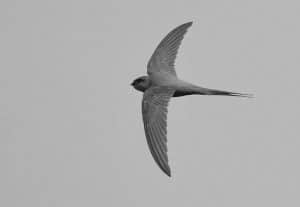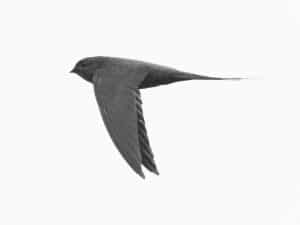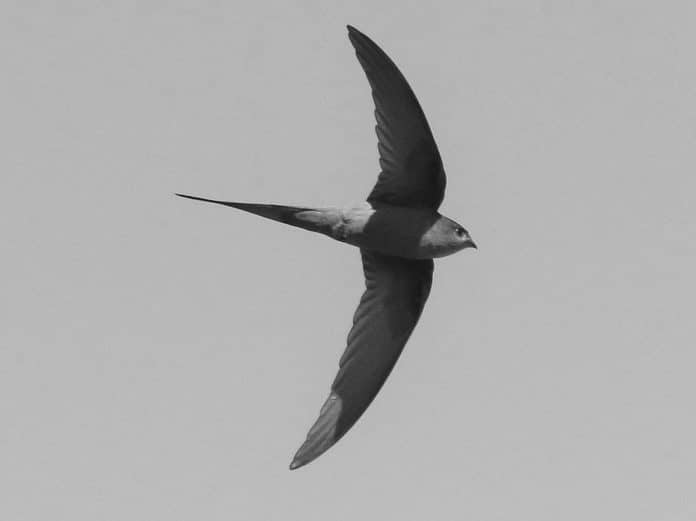Introduction to the African Palm-Swift
The African Palm-Swift (Cypsiurus parvus) is a small bird species that belongs to the Apodidae family. These birds are known for their long wings and short, forked tails. They are typically found in sub-Saharan Africa, including Tanzania.
The African Palm-Swift in Tanzania is known for its unique habitat, as it is usually found in palm groves and other tall trees. They are social birds, often seen flying in groups. They are also known for their graceful flying, as they can hover and glide with ease.
Habitat and Distribution of the African Palm-Swift in Tanzania
In Tanzania, the African Palm-Swift is found in the coastal regions, including Zanzibar and Pemba islands, as well as the eastern part of the mainland. These birds are typically found in palm groves and other tall trees, where they build their nests.
The African Palm-Swift is a migratory bird, and during the rainy season, they move to central and southern Africa. They return to Tanzania during the dry season, usually between June and September.
Physical Characteristics of the African Palm-Swift

The African Palm-Swift is a small bird, measuring about 12 to 14 centimeters in length. They have a wingspan of about 30 centimeters. These birds have brownish-gray feathers on their back and wings, with a white belly and throat. They have short, forked tails, which help them maneuver in the air.
The African Palm-Swift has a unique bill, which is short and slightly curved. They use this bill to catch insects, which make up the majority of their diet.
Behavior and Feeding Habits of the African Palm-Swift
The African Palm-Swift is a social bird, often seen flying in groups. They are known for their graceful flying, as they can hover and glide with ease. They are also fast flyers, and can reach speeds of up to 45 kilometers per hour.
The African Palm-Swift feeds mainly on flying insects, which they catch in the air using their bills. They are particularly fond of ants, termites, and other small insects. They are also known to drink water while in flight, scooping up water from rivers or other bodies of water.
Breeding and Reproduction of the African Palm-Swift

The African Palm-Swift breeds between October and December in Tanzania, during the rainy season. They build their nests in palm groves and tall trees, using grass, feathers, and other materials. The female typically lays two eggs, which are incubated for about 19 days.
After hatching, the chicks are fed by both parents, who regurgitate insects for them to eat. The chicks fledge after about 30 days, and become independent after a few weeks.
Conservation Status and Threats to the African Palm-Swift in Tanzania
The African Palm-Swift is classified as a species of least concern by the International Union for Conservation of Nature (IUCN). However, their populations are declining in some areas due to habitat loss and fragmentation.
In Tanzania, the African Palm-Swift is threatened by the destruction of palm groves and other tall trees, which are their primary habitat. These trees are often cut down for firewood or to make way for agriculture and other developments.
Tips for Birdwatching the African Palm-Swift in Tanzania
If you’re interested in birdwatching the African Palm-Swift in Tanzania, there are a few things you can do to increase your chances of spotting them. Firstly, head to coastal regions and look for palm groves and tall trees. These are the primary habitats of the African Palm-Swift. Secondly, look for groups of birds flying in a graceful and coordinated manner. The African Palm-Swift is often seen flying in groups, so keep an eye out for them. Finally, be patient and observant. These birds move quickly and can be difficult to spot, so take your time and scan the trees carefully.
Other Bird Species Found in the Palms of Tanzania
Tanzania is home to a variety of bird species that are found in the palms and other tall trees. Some of the other bird species you may encounter include the Fischer’s Lovebird, the Brown-headed Parrot, and the Red-bellied Parrot.
Interesting Facts about the African Palm-Swift

- The African Palm-Swift is also known as the Little Swift.
- These birds can fly for long distances without resting.
- The African Palm-Swift is a monogamous bird, and pairs often stay together for several breeding seasons.
Conclusion: Appreciating the Beauty of the African Palm-Swift in Tanzania
The African Palm-Swift is a beautiful and unique bird species that is found in the palms and tall trees of Tanzania. These birds are known for their graceful flying and unique habitat, and are a must-see for bird enthusiasts visiting Tanzania. By understanding their habitat, physical characteristics, behavior, and feeding habits, we can appreciate the beauty of these birds and work to protect their populations in Tanzania.


































